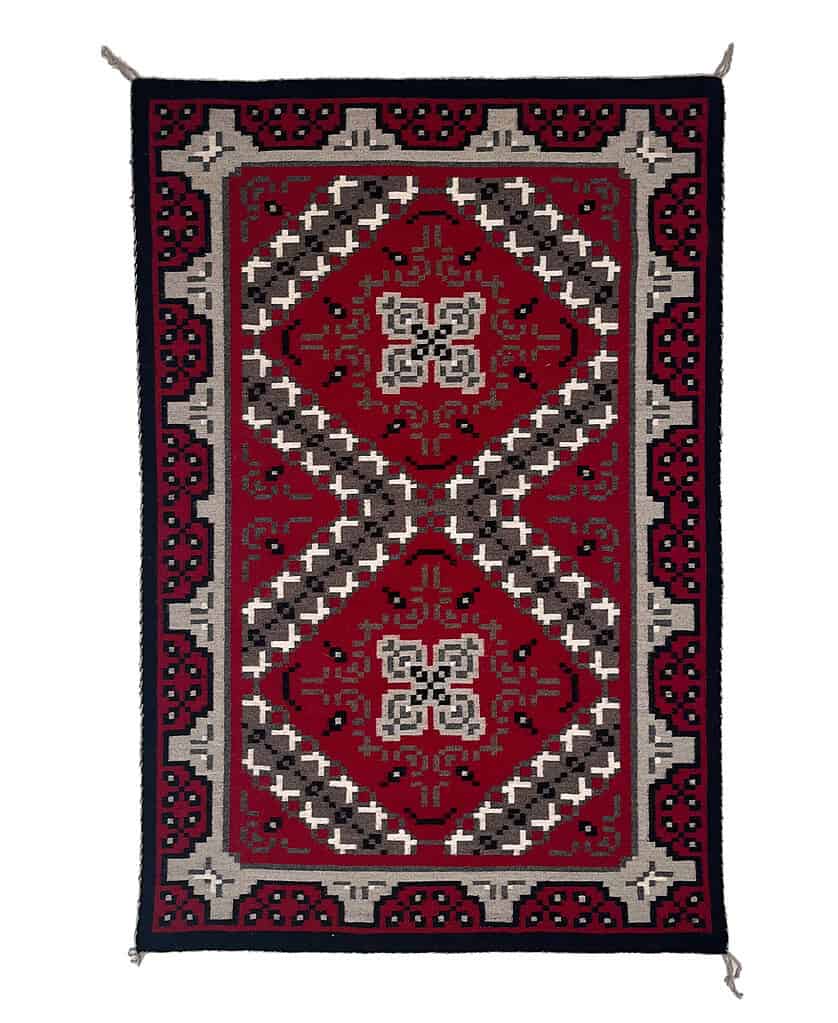Some information may be outdated.
The Ganado Red style of weaving is likely the best known of all Navajo rugs, inspired by Juan Lorenzo Hubbell (founder of the Hubbell Trading Post in 1878 and National Historic Site in Ganado, Arizona). Hubbell was one of the most well-known and respected traders among the Navajo people of his time. Hubbell disliked chemical dyes, which became more widely available around the turn of the century, and encouraged the use of the deep maroon color made from natural dyes that later became known as Ganado Red.

The Ganado weavings of today feature deep red backgrounds with black, gray, white, and brown accents. They often are enclosed by striking black borders and contain diamond designs in the center and in each corner. This style is considered the direct contrast to the Klagetoh style, which has a gray background with a large central diamond motif and red, black, and white accents.
“The People’s Tapestry: Weaving Tradition in Navajo Culture” is now on display at the Moab Museum, featuring a variety of styles of Navajo textiles, including the Ganado Red. In this column throughout the summer, the Museum team will feature a variety of weaving styles and their associated backgrounds and stories.
This exhibition is a celebration of the magnificent weavings created by the Diné (which means “the people” in Navajo). The significance of Diné textiles transcends artistic expression; weavers beautify their world through the spiritual act of weaving and integrate their art into the web of everyday life. The Navajo weaver’s song declares, “with beauty, it is woven.”
The Moab Museum is dedicated to sharing stories of the natural and human history of the Moab area. This is part of a series highlighting distinct textiles and styles displayed in the Museum’s temporary exhibition “The People’s Tapestry,” displayed summer-fall 2023. To explore more of Moab’s stories and artifacts, find out about upcoming programs, and become a Member, visit www.moabmuseum.org.
Appreciate the coverage? Help keep local news alive.
Chip in to support the Moab Sun News.





